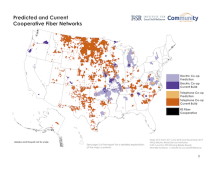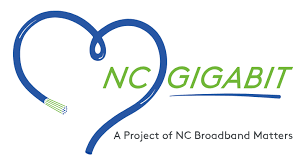Third Edition of Policy Brief Reveals Increasing Gains in Co-op Fiber Deployment
Originally published in 2017, our report, Cooperatives Fiberize Rural America: A Trusted Model for the Internet Era, focuses on cooperatives as a proven model for deploying fiber optic Internet access across the country, especially in rural areas. An update in the spring of 2019 included additional information about the rate at which co-ops are expanding Internet service. Now we’ve updated the report with a new map and personal stories from areas where co-ops have drastically impacted local life.
Download the updated report [PDF] here.
All versions of the report can be accessed from the Reports Archive for this report.
Some highlights from the third edition of Cooperatives Fiberize Rural America include:
- More than 110 rural electric co-ops have embarked on fiber optic projects to increase Internet access for their members, a number that is growing rapidly from just a handful in 2012.
- 31.3 percent of the fiber service available in rural areas is provided by rural cooperatives.
- Personal anecdotes from Michigan, Virginia, Minnesota, and Missouri residents attest to the far-reaching benefits of cooperatives’ expansion into Internet service.
- A new map shows where rural cooperatives are planning to expand fiber Internet service.
Co-ops have proven that this is a model that works. With increased support from federal and state governments, they will continue to connect rural Americans to economic and educational opportunities otherwise denied to them.
Read Cooperatives Fiberize Rural America: A Trusted Model For The Internet Era [PDF] here.




 This week, Christopher and his guests explore mapping in our episode titled, "Broadband Mapping Means Money: Understanding How Data Drives Decisions.”
This week, Christopher and his guests explore mapping in our episode titled, "Broadband Mapping Means Money: Understanding How Data Drives Decisions.”